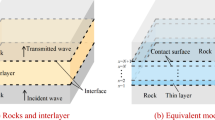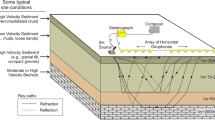Abstract
Based on the Rayleigh’s scattering theory, the effects of sandstorms on the propagation of electromagnetic wave with different visibilities are presented by solving the scattering field of charged sand particles. Because of the electric charges on the sand surface, the theoretical attenuation will be large enough to match the measured value under certain conditions. And the results show that the effect of sand with electric charges all over its surface on electromagnetic wave attenuation is the same as that of sand without charge, which proves that electric charges distribute on partial surface of the sand in fact.
Similar content being viewed by others
References
Fredrick, S. S., Jothiram V., Propagation delays induced in GPS signals by dry air, water, vapor, hydrometeors, and other particulates, J. Geophy. Res. D, 1999, 104(8): 9663–9670.
Bashir, S. O., McEwan, N. J., Microwave propagation in dust storms: a review, IEE Proc. F. Commun Radar & Signal Process, 1986, 133(3): 241–247.
Ahmed, I. Y., The effects of sand and dust storms on microwave propagation, Arab States Broadcast Union Tech. Rev., 1977, 1: 23–29.
Chu, T. S., Effect of sandstorms on microwave propagation, Bell Syst. Tech. J, 1979, 58: 549–555.
Gary Comparetto, The impact of dust and foliage on signal attenuation in the millimeter wave regime, J. Space Comm., 1993, 11: 13–20.
Ghobrial, S. I., Sharif, S., Microwave Propagation in Air with Suspending Dust Particles, International Symp. on Antenn. and EM Theory, 1985.
Haddad, S., Salman, M. J. H., Jha, R. K., Effects of Dust/Sandstorms on Some Aspects of Microwave Propagation, Proc. URSI Commission F Symposium, Louvain-la-Neuve: ESA publication, 1983, 194: 153–161.
Ghobrial, S. I., Effect of hygroscopic water on dielectric constant of dust at X-band, Electron Lett., 1980, 16: 393–394.
Ansari, A. J., Evans, B. G., Microwave propagation in sand and dust storms, IEE Proc. F. Commun Radar & Signal Process, 1982, 129: 315–322.
Gill, E. W. B., Frictional electrification of sand, Nature, 1948, 18(4): 568–569.
Zheng, X. J., Huang, N., Zhou, Y. H., Laboratory measurement of electrification of wind-blown sands and simulation of its effect on sand saltation movement, J. Geo. Res. D, 2003, 108(10): 4322.
Huang, N., Zheng, X. J., A laboratory test of electrification phenomenon in wind-blown sand flux, Chinese Science Bulletin, 2001, 46, 417–420.
Renno, N. O., Wong, A. S., Atreya, S. K. et al., Electrical discharges and broadband radio emission by Martian dust devils and dust storms, Geo. Res. Lett., 2003, 30: 2140.
Jin, Y. Q., Remote Sensing Theory of Electromagnetic Scattering and Thermal Emission (in Chinese), Beijing: Science press, 1993.
Author information
Authors and Affiliations
Corresponding author
Rights and permissions
About this article
Cite this article
He, Q., Zhou, Y. & Zheng, X. Effects of charged sand on electromagnetic wave propagation and its scattering field. SCI CHINA SER G 49, 77–87 (2006). https://doi.org/10.1007/s11433-004-5138-y
Received:
Accepted:
Issue Date:
DOI: https://doi.org/10.1007/s11433-004-5138-y




